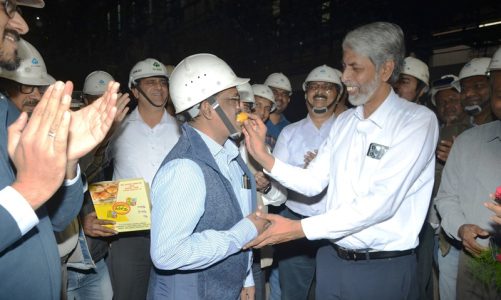Bokaro: The government is focusing on doubling steel production by 2030, which will increase the demand for refractories. The country’s refractory producers have a hard time bringing in enough production to meet the country’s future demands. Currently, manufacturers are mostly dependent on imported raw materials.
It is impossible to make steel without refractories, so for the first time, more than 350 experts from across the country and abroad met together. They had a brainstorming session focused on drawing a road map for future refractory requirements in steel, cement, and other industries. The two day International Conference on “The Future of Refractories in Iron and Steel Industry” REFIS-4.0 started on Friday at BSL’s Human Resource Development Center hosted by Bokaro Steel Plant (BSL). The Director of IIT-ISM, Dhanbad, professor Rajeev Shekhar was present as the chief guest. Executive directors, Sanjay Kumar, B K Tiwary, A Srivastav of SAIL and others were present at the function.
The two day International Conference on “The Future of Refractories in Iron and Steel Industry” REFIS-4.0 started on Friday at BSL’s Human Resource Development Center hosted by Bokaro Steel Plant (BSL). The Director of IIT-ISM, Dhanbad, professor Rajeev Shekhar was present as the chief guest. Executive directors, Sanjay Kumar, B K Tiwary, A Srivastav of SAIL and others were present at the function.
Delegates from Tata Steel, JSW Steel, and refractory manufacturers in large numbers participated in the conference organized in association with Indian Institute of Metals, Bokaro Chapter and Indian Ceramics Society. There were 40 technical papers presented by experts in the conference. Shishir Kumar Nayak, general manager of Dalmia OCL, said Refractory products are essential to the steel industry. 70 percent of the refractory produced in the country is used in steel production, 10 percent in cement production, and the rest in aluminum, copper, etc, and power plants. Increasing steel production will also increase the need for refractory.
Shishir Kumar Nayak, general manager of Dalmia OCL, said Refractory products are essential to the steel industry. 70 percent of the refractory produced in the country is used in steel production, 10 percent in cement production, and the rest in aluminum, copper, etc, and power plants. Increasing steel production will also increase the need for refractory.
There is a requirement for around 12 kilograms of refractory per tonne of crude steel production in the country. The market for refractory in the country is about Rs 7000 crores at present when 120 MTPA steel is produced. In India, 1300 million metric tons of refractory are consumed each year. Refractory producers spend about Rs 2500 crores on raw materials for their production, most of which come from abroad.
Refractory producers and experts are concerned that if the country’s steel production increases to 300 MTPA by 2030, how will they meet the demand? By then, the refractory market will be worth Rs 30,000 crores. As part of that effort, they have been focusing on increasing production through modernization and expansion based on the Industrial 4.0 concept. The availability of raw material should also be ensured for smooth steel production.
The executive director of SAIL Refractory Unit (SRU), P K Rath said “the use of low cost and high quality refractory bricks will also reduce the cost of steel production. The expert of refractory industries used the conference in sharing their views and ideas in increasing refractory production”.
Professor, Rajeev Shekhar urged the refractory manufacturers to pay special attention to the import substitution options of raw materials required for this sector so that the “Self-reliant India” and “Make in India” campaign could be strengthened.






